Welcome to the world of polyculture, an approach to gardening that embraces diversity and mimics natural ecosystems.
How to Use Long-Leaf Plants in Landscape Design
Long, strappy-leafed plants, with their dramatic foliage and exceptional growth patterns, have become a popular choice in landscape design. Their unique characteristics not only create visual interest in the garden but also provide a multitude of benefits.
These can range from providing shade and privacy to contributing to the overall biodiversity of the garden. The term “long-leaf plants” refers to a variety of plant species that share one common feature: elongated, often narrow leaves.
These leaves can vary vastly in terms of texture, colour, and size, making long leaf plants a versatile choice for any landscape. It’s important to note that not all plants that look similar are closely related.
If you look closely at the flowers of long, strappy-leafed plants, you’ll see that they can be strikingly different between plants such as lomandras, dietes and Australian flax lillies.
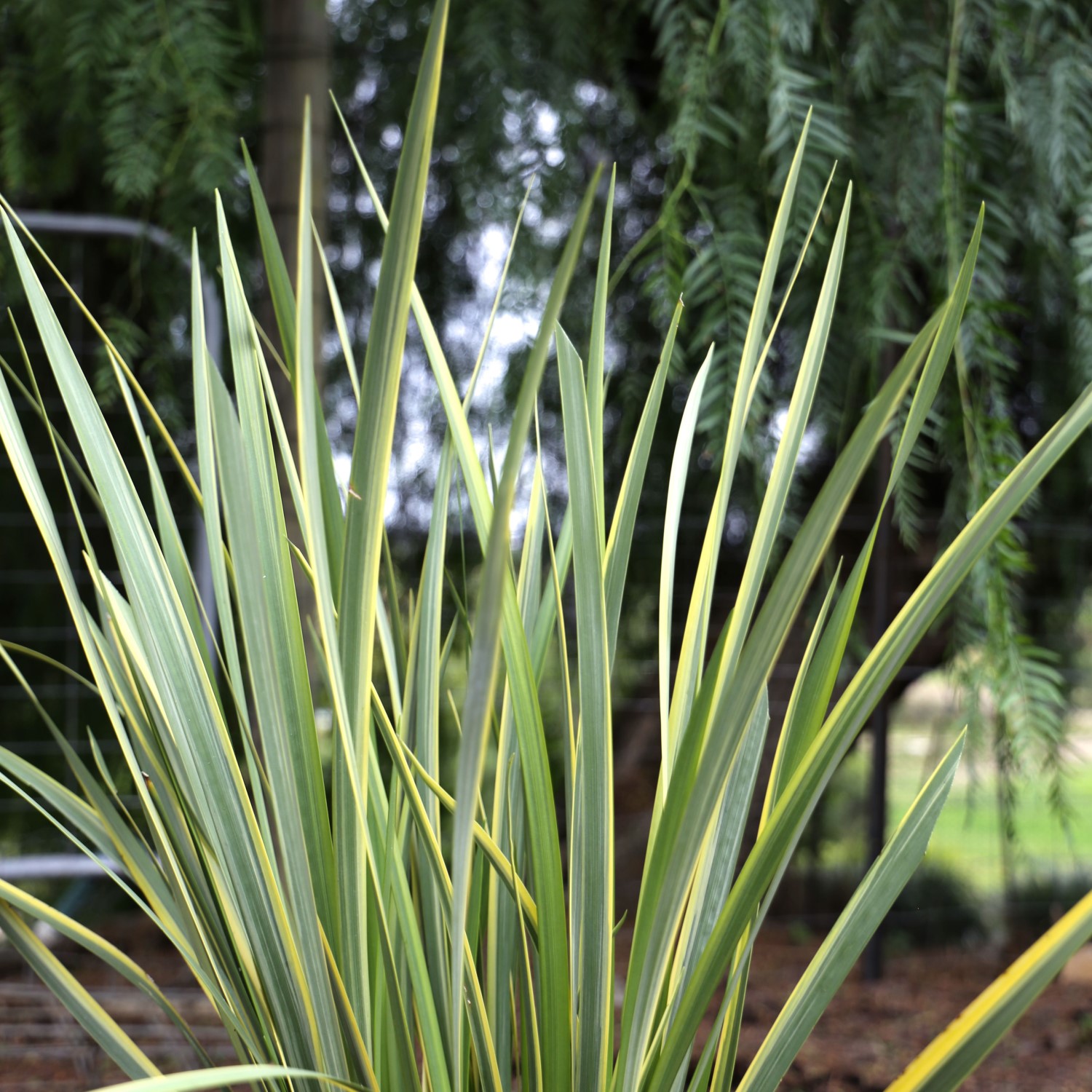
- Choosing the Right Long Leaf Plants for Your Landscape
- Incorporating Long Leaf Plants into Your Landscape Design
- Caring for Your Long Leaf Plants
- Soil Conditions for Strappy-Leafed Plants
- Understanding Large-Leafed Leaves: Reticulate vs Parallel Leaf Venation
- Large Leaves and Sunlight: The Perfect Balance
- Daniel’s Wrap
Choosing the Right Long Leaf Plants for Your Landscape
Factors to Consider
Choosing the right long leaf plants for your landscape requires careful consideration of several factors. Firstly, the climate and soil type of your area will largely determine which species of long leaf plants will thrive. For instance, some long leaf plants prefer well-drained soil and warmer climates, while others may tolerate cooler temperatures and heavier soils.
Assessing your landscape’s conditions, such as soil quality, temperature and sunlight exposure, is equally important. Some long leaf plants require full sun, while others may need partial or full shade only.
Lastly, your design aesthetic will also influence your choice of long leaf plants. Whether you’re aiming for a tropical oasis or an Australian bush feel, there are long leaf plants that can help you achieve your desired look.
Best Long Leaf Plants for Landscape Design
Here are some of the best long leaf plants for landscape design:
- Agapanthus (Agapanthus spp.) – Known for its strappy leaves and stunning blue or white flowers.
- Phormium (Phormium tenax) – Also known as New Zealand flax, it boasts sword-like leaves that come in various colours.
- Lomandra (Lomandra longifolia) – A hardy Australian native with bright green, weeping leaves.
- Dianella (Dianella spp.) – Offers a contrasting deep blue foliage and small purple flowers.
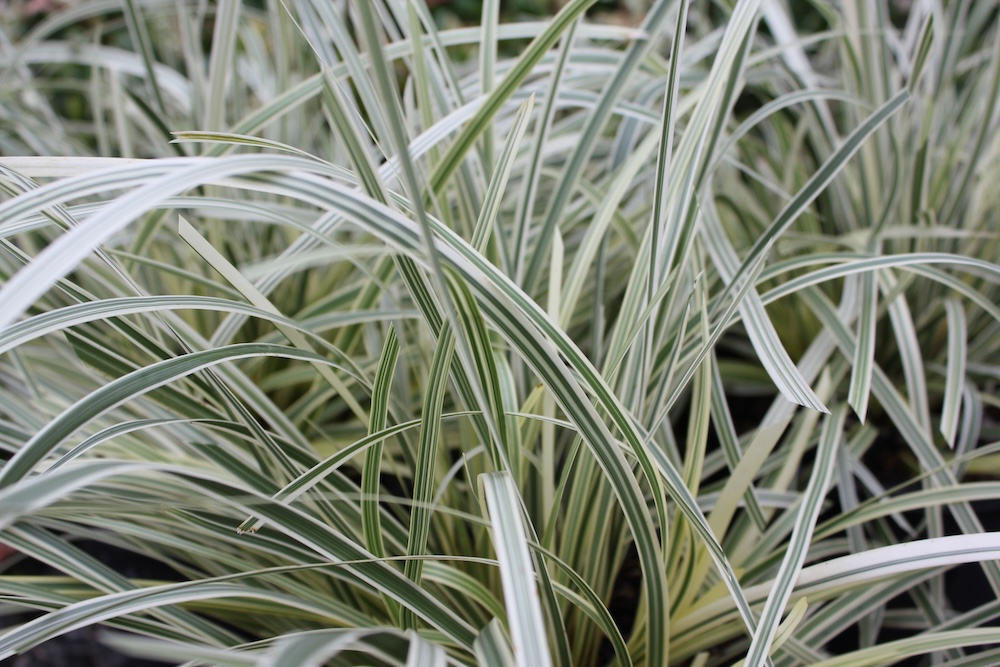
Incorporating Long Leaf Plants into Your Landscape Design
Strategic Placement of Long Leaf Plants
For maximum impact, consider the mature size of the long leaf plant when deciding where to place it in your landscape. Larger plants can be used as a focal point, while smaller varieties of tropical plant can be grouped together for a striking mass planting effect.
Mixing and Matching with Other Plants
When mixing and matching long leaf plants with other types of plants, consider the contrast and harmony in terms of leaf shapes, sizes, and colours. For example, the slender leaves of long leaf plants can beautifully contrast with the round foliage of other plants.
Creating a Tropical Ambiance with Long Leaf Plants
Long leaf plants such as agapanthus and phormium can help create a tropical oasis feel in your garden. Pair these with other tropical plants like the bird of paradise (Strelitzia reginae), philodendrons (Philodendron spp.), and palms (Arecaceae family) to further enhance the exotic vibe.
These plants not only share similar growing requirements but also offer a visually appealing mix of leaf shapes and sizes.
Creating a Scrub-Like Aesthetic with Long Leaf Plants
To achieve an Australian bush feel, consider using native long leaf plants like lomandra, kangaroo paws (Anigozanthos spp.), dianella, and dietes (Dietes spp.). Pair these with other native plants such as eucalypts (Eucalyptus spp.), westringias (Westringia fruticosa), and callistemons (Callistemon spp.).
These plants not only thrive under similar conditions but also complement each other aesthetically, offering a blend of textures and colours reminiscent of the Australian landscape.
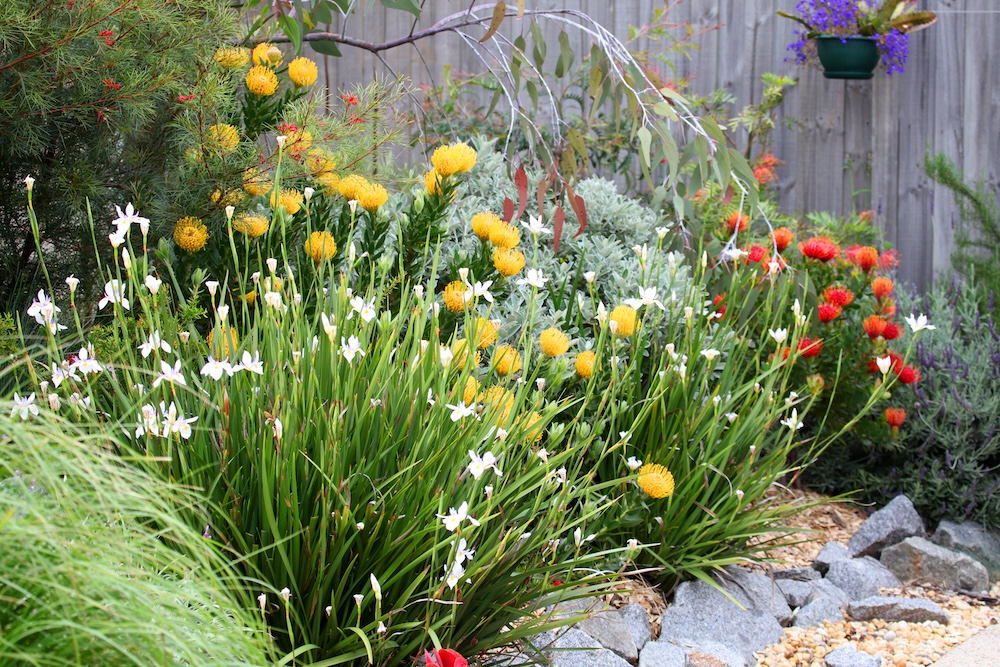
Caring for Your Long Leaf Plants
Many long leaf plants, often marketed as “low maintenance,” will always benefit from proper care. The trained eye can spot the difference between a well-kept strappy plant and a neglected one.
Pruning Strappy Plants
Pruning is an essential part of maintaining the health and aesthetics of your long leaf plants. However, it should be noted that pruning isn’t a solution for planting the wrong type of plant in the incorrect place.
Take, for instance, planting a large Lomandra hystrix next to a footpath. Sure, it might look great when young, but it will eventually grow into a monster of a plant. When pruning strappy plants, you can cut them low to the ground, and they will resprout.
Some gardeners prefer to prune the leaves into a dome shape. While this might create a pleasing aesthetic, it also commits you to regular pruning and results in an unnatural shape. Alternatively, you can allow the plant to maintain its natural shape and divide the rhizomes when it becomes overgrown.
Propagation and Growth
Propagating long leaf plants from cuttings is a relatively straightforward process. Start by pruning the foliage to limit water loss. Then, use a shovel or hori knife to divide the root system of the plant.
You can then transplant these divisions and ensure they are well-watered. Remember, it’s illegal to sell plants with Plant Breeders’ Rights (PBR) propagated from cuttings. This activity is only permissible for personal use.
Promoting healthy growth in these plants often involves providing the right growing conditions, implementing a suitable watering regime, and applying appropriate fertilisers.
Treating Common Pests
Long leaf plants, like any other plants, are susceptible to pests. Common pests include aphids, scale insects, and spider mites. An Integrated Pest Management (IPM) plan can help manage these pests effectively.
This approach combines organic methods, such as introducing beneficial insects, with non-organic treatments like pesticides when necessary. Remember, the key is to maintain a balance that promotes plant health while minimising environmental impact.
Soil Conditions for Strappy-Leafed Plants
Understanding the Soil Needs of Strappy-Leafed Plants
Strappy-leafed plants have varying soil preferences depending on their species and natural habitat. However, they generally prefer well-draining soil and tend to prefer neutral to slightly acidic conditions.
Understanding the specific soil needs of your strappy-leafed plants is important for their successful growth and development. The right soil conditions can foster robust plant health, encourage vigorous growth, and help prevent disease and pest issues.
Acidic Soil and Strappy-Leafed Plants
Acidic soil is characterized by a pH level below 7. It promotes higher levels of aluminum uptake in plants, while decreasing iron uptake. Strappy-leafed plants respond to acidic soil in various ways.
Some may exhibit enhanced growth due to increased availability of certain nutrients, while others may show signs of nutrient deficiency if the acidity level is too high. Examples of strappy-leafed plants that thrive in acidic soil include the New Zealand Flax and Kangaroo Paw.
Soil Drainage
Well-draining soil allows water to percolate through the soil layers effectively, preventing waterlogging and root rot. This characteristic is vital for most plants, especially certain strappy-leafed plants as they generally do not fare well in waterlogged conditions.
Of course, there are examples of strappy plants that do well with wet feet, such as Lomandra hystrix. Unless your plant has adapted to wet feet, poorly drained soil can lead to waterlogging, resulting in root damage and increased susceptibility to diseases.
To improve soil drainage in your garden, consider incorporating organic matter or grit into the soil, or growing plants in raised beds or mounds.
Drought Tolerance and Soil Dryness
Many strappy-leafed plants, especially those native to arid regions, are drought-tolerant. These plants have adapted to survive in conditions where water is scarce and the soil is often dry.
However, while they can tolerate dry conditions, it’s important to avoid prolonged periods of drought. Regular, deep watering during dry spells can help these plants stay healthy.
Maintaining Optimal Soil Conditions for Strappy-Leafed Plants
In summary, the key soil conditions for growing healthy strappy-leafed plants include well-draining, slightly acidic soil, and a balance between moisture and dryness. Regular soil pH testing and adjustments can help maintain optimal acidity levels.
Improving soil drainage and managing watering schedules based on the plant’s needs and weather conditions can also contribute to the successful growth of your strappy-leafed plants.
Understanding Large-Leafed Leaves: Reticulate vs Parallel Leaf Venation
What are Reticulate Leaves?
Reticulate venation, also known as netted venation, describes a leaf vein arrangement that appears net-like or webbed. The veins branch out from the main, central vein into a complex network, forming a pattern that resembles a mesh or net. This contrasts with parallel venation, where the veins run alongside each other, from the base to the tip of the leaf.
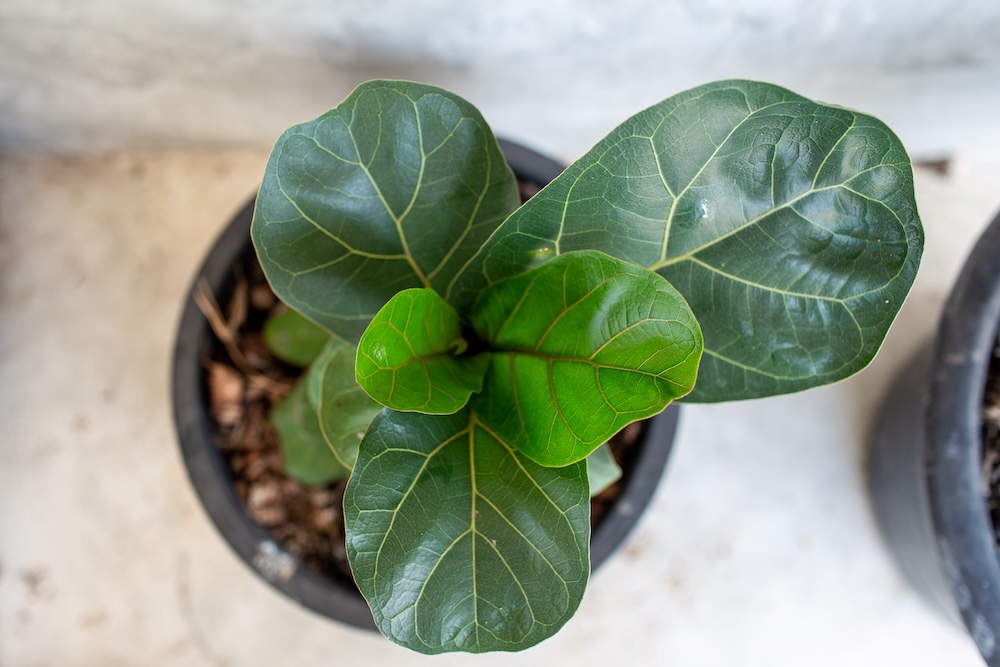
Examples of Large-Leafed Reticulate Plants
A prime example of a large-leafed plant with reticulate venation is the fiddle leaf fig (Ficus lyrata). This popular indoor plant is renowned for its substantial, waxy leaves, which can tolerate low light conditions and rarely flower. The leaf length is impressive, adding a dramatic flair to any indoor space.
Other examples of large-leafed reticulate plants popular in home gardening and professional landscaping include the rubber plant (Ficus elastica), with its dark green, glossy leaves, and the Swiss cheese plant (Monstera deliciosa), with its deep green, distinctively perforated foliage.
Parallel venation is commonly found in monocots, such as grasses and lilies, while reticulate venation is typical in dicots, a group that includes a vast array of garden plants. However, some monocot families are known to have leaf veins that branch, most notably the aroid family which includes the Swiss cheese plant.
Understanding Parallel Leaf Venation
Parallel venation is a distinct pattern of leaf vein arrangement commonly found in monocotyledonous plants (monocots). As the name suggests, in parallel venation, the veins run parallel to each other from the base to the tip of the leaf. This includes the strappy plants we’ve focused on for most of this article.
Parallel venation is an adaptation that allows efficient transportation of water and nutrients along the length of the leaf. It is most prominently seen in grasses, lilies, and orchids. However, it’s also found in some large-leafed plants like the banana tree (Musa spp.) and the bird of paradise (Strelitzia reginae).
Even though these big leaf plants’ veins do branch, they have a principle leaf vein that gives rise to secondary veins that are all parallel, similar to the plume of a feather. We can call this type of leaf venation “pinnately parallel.”
The Connection with Strappy Plants
Strappy plants, so named for their long, strap-like leaves, tend to exhibit parallel venation. They’re almost always monocots and so they don’t exhibit true lateral growth of the stem. When the base of a cordyline or yucca grow thicker, it’s because the individual cells are growing larger instead of the stem growing thicker through new cell growth.
Large Leaves and Sunlight: The Perfect Balance
Light Requirements for Large Leaf Plants
Jungle plants with large, dark green leaves have adapted to low-light conditions, where they’re constantly shaded out by larger trees. Monsteras and rubber plants with big leaves have to absorb as much light as they possibly can because there’s so little of it beneath the rainforest canopy.
Commonly Grown Outdoors: Large Leaf Plants in Your Garden
Successfully growing large leaf plants outdoors involves understanding their specific needs and providing the right conditions. One critical factor to consider is sunlight exposure, as we’ve discussed.
While many large leaf plants can tolerate low light, some do prefer bright, indirect light. With the right care, these plants can become stunning focal points in your garden, offering lush, dramatic foliage that adds a touch of the exotic to your outdoor space.
Indoor Plants with Big Leaves
Indoor plants are really just outdoor plants that thrive in low light conditions. No plant really evolved to be indoors, but many of them have evolved to deal without access to direct sun. Examples of plants with strappy or large leaves that thrive indoors include spider plants, tongue of mother-in-law, monsteras and cordylines.
You can treat these plants exactly like you would outdoor plants, except that you might wipe the leaves down to remove dust, opt for low-smelling fertilisers instead of manure, and other such tweaks that are usual for plants grown indoors.
Daniel’s Wrap
Long leaf plants can add significant aesthetic value and diversity to your landscape designs. While they require some level of care and attention, the rewards are well worth the effort.
Don’t be afraid to experiment with different species and planting arrangements. Remember, gardening is as much about the journey as it is about the end result. Have fun with your long leaf plants and watch your landscape come to life.

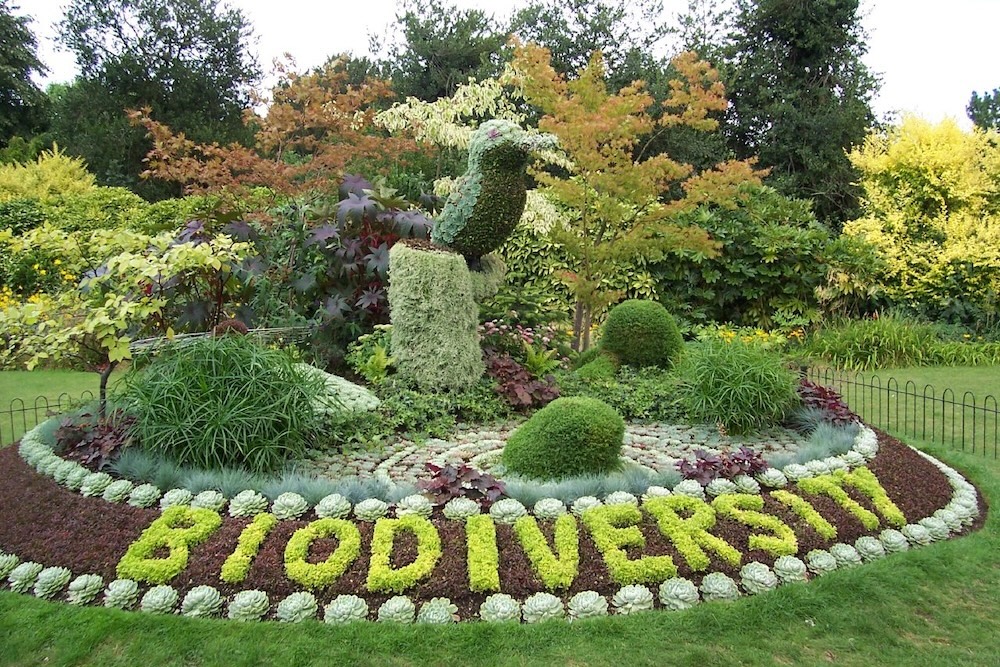
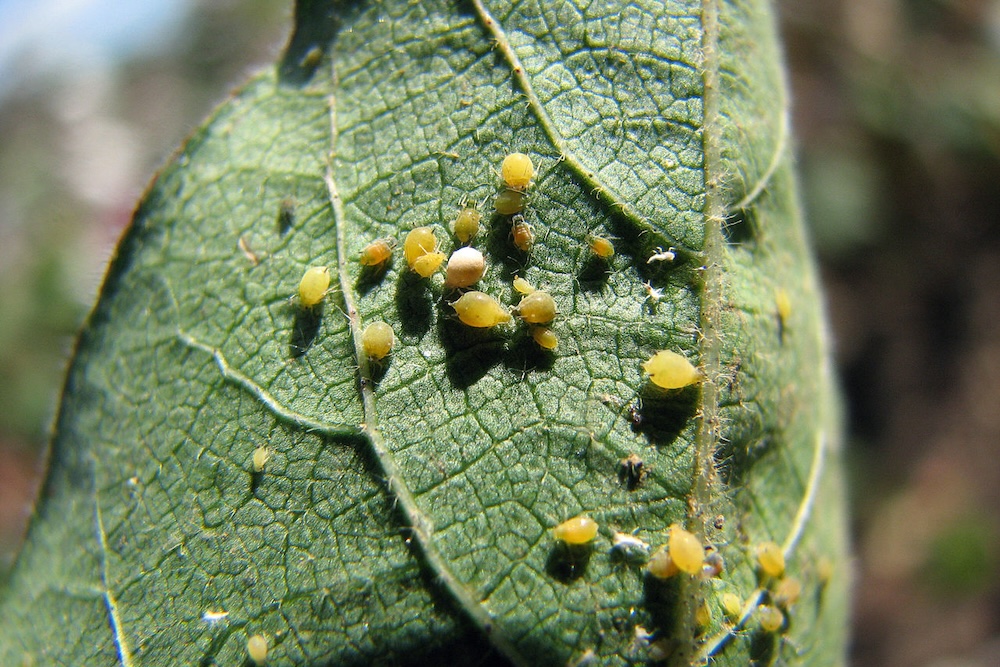
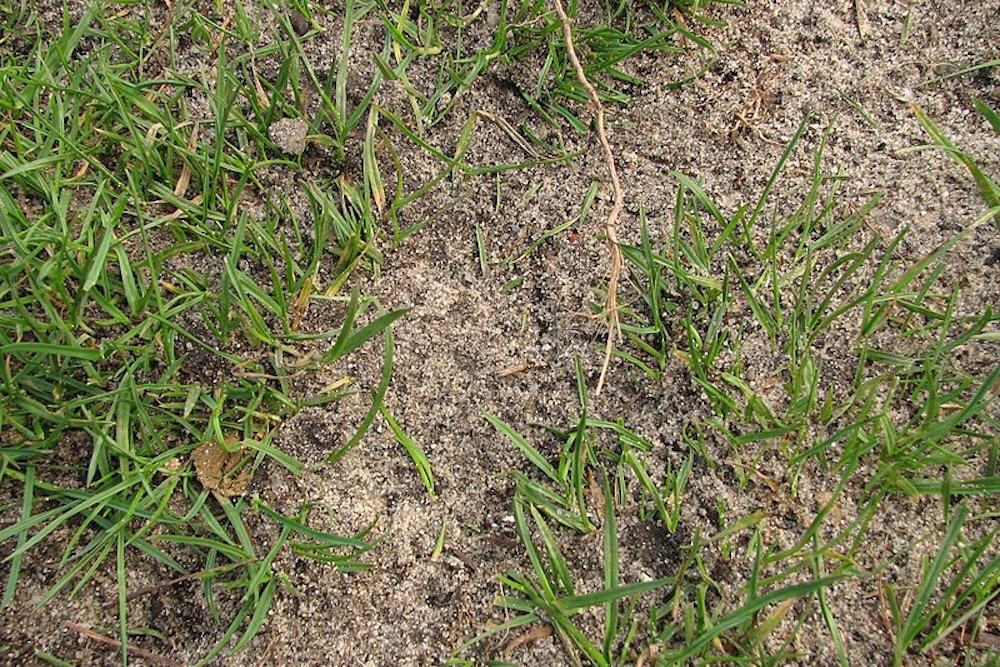
This Post Has 0 Comments